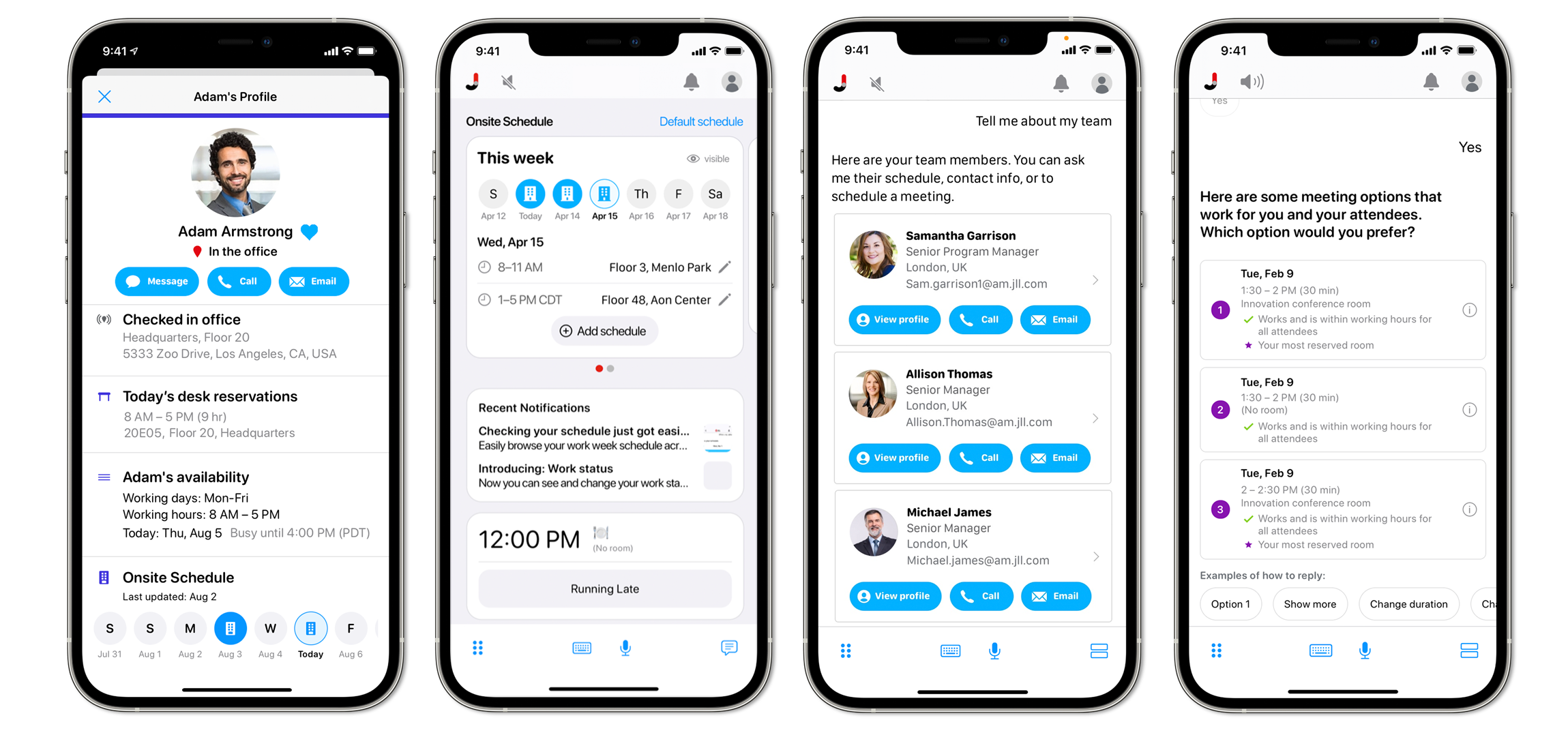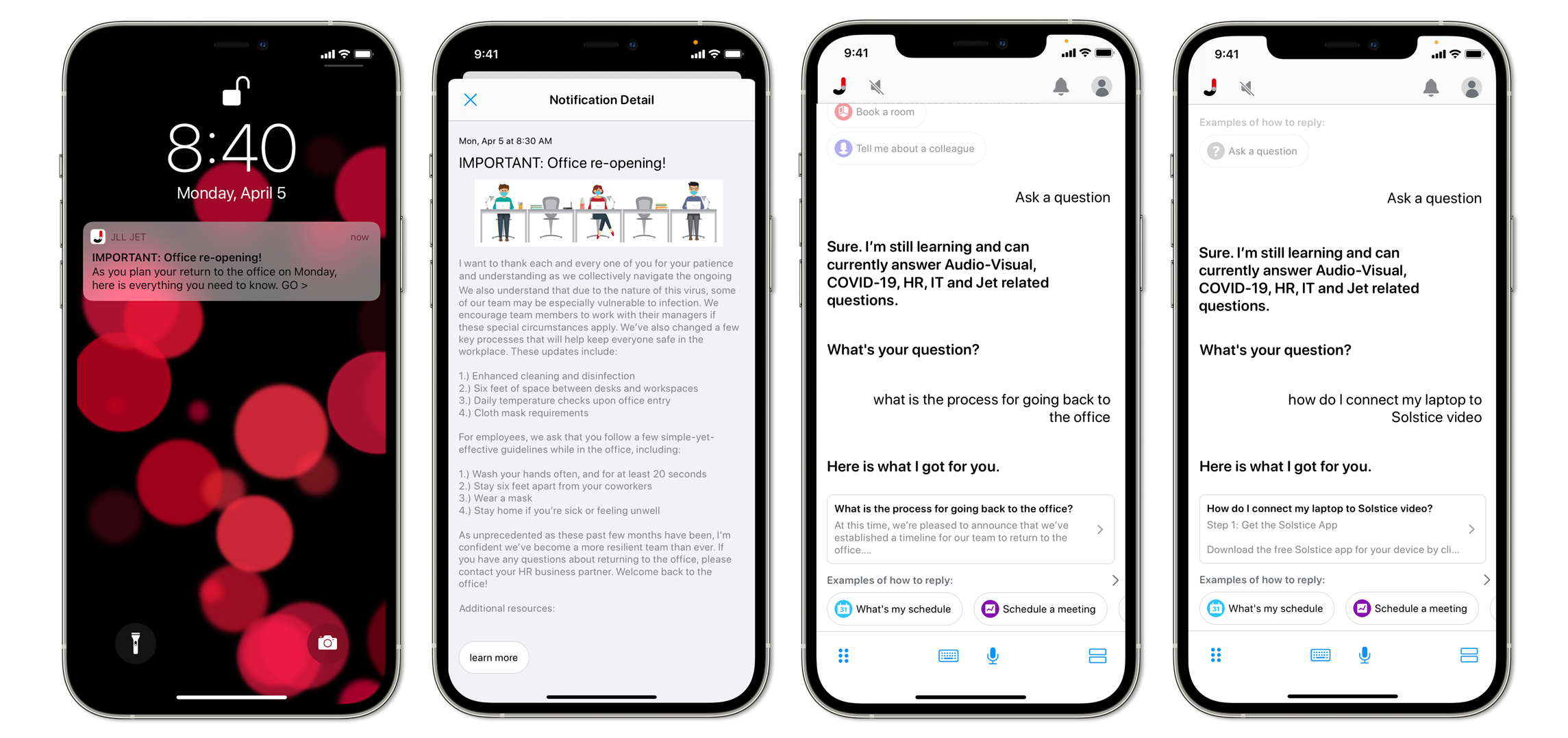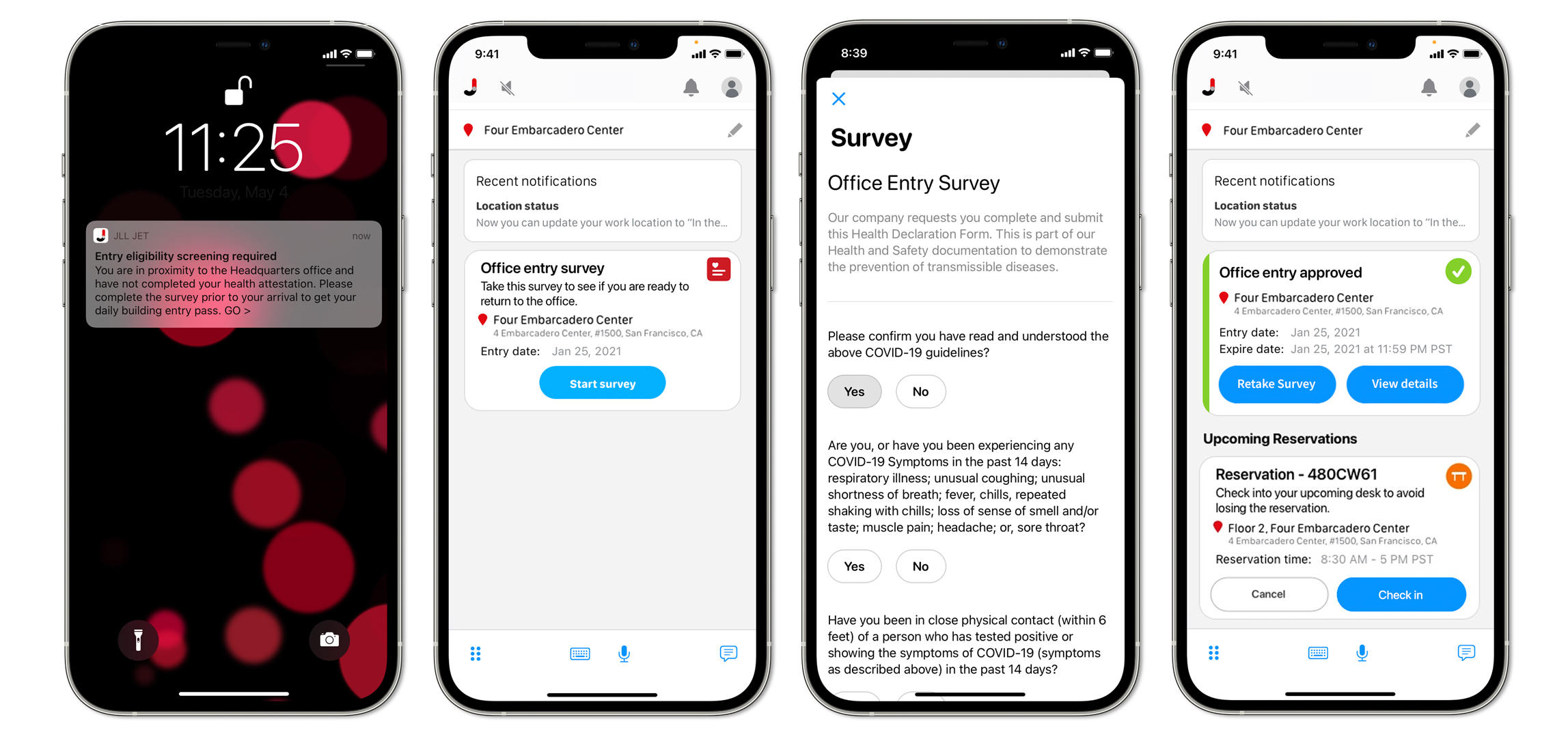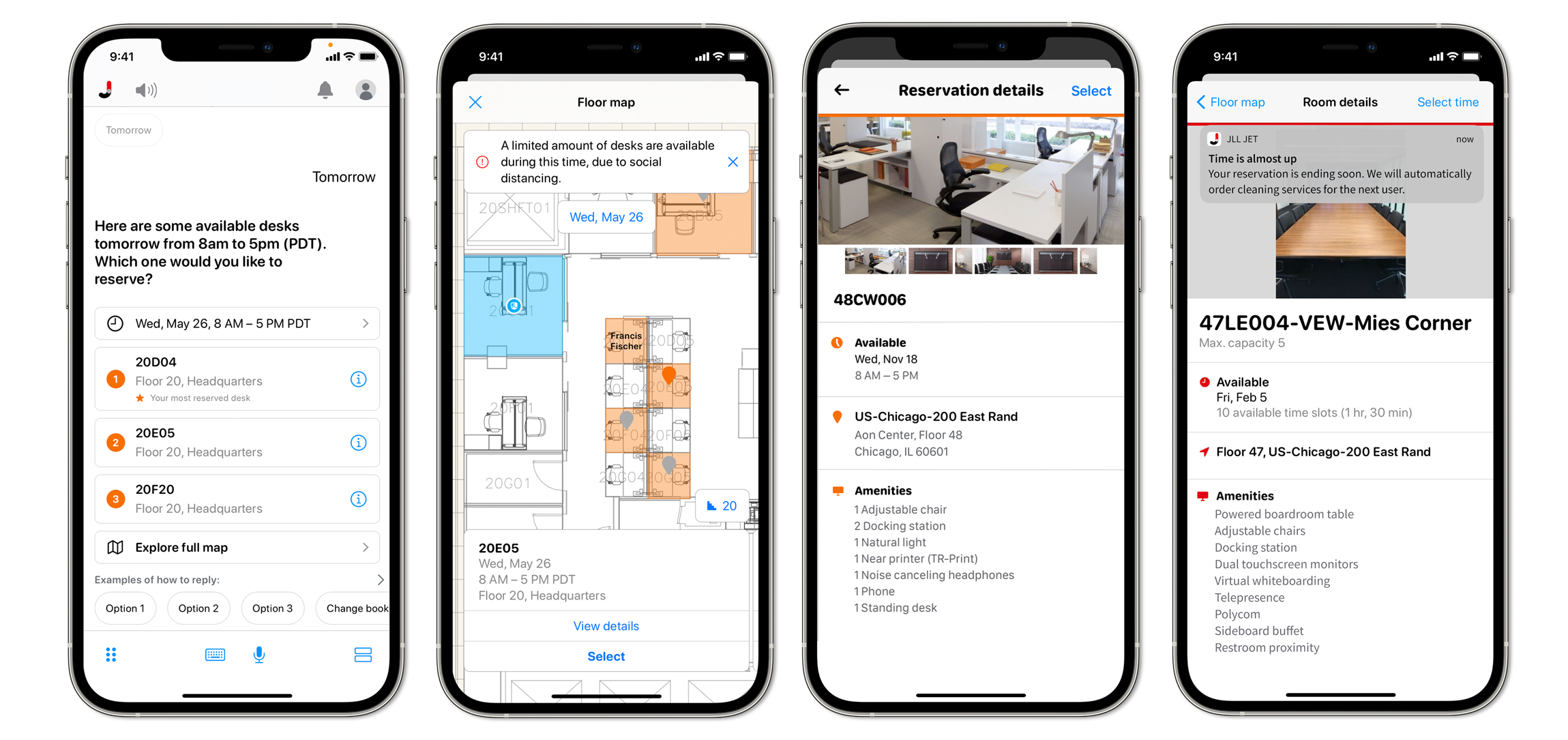
Key questions workers have about return-to-office and the results they expect
After a long period of remote working under stay-at-home orders, most organizations now have specific plans and timelines to return to the office, and many have already started phased re-entry. Many employers are offering workers a choice of where they want to work going forward, so leaders need to find ways to generate trust in the return-to-office process and have employees see the value of being back in person.
Here are five key questions you should be prepared to answer and ways JLL Jet can help deliver the results workers are expecting throughout the journey.
How can I make sure that the time and effort of commuting to the office is worth it?
Many organizations are embracing hybrid work and giving their employees the flexibility to work remotely and choose when they want to come into the office. While everyone agrees that socializing with colleagues, learning, meetings, and collaboration are much more effective in person, no one wants to risk commuting to the office only to sit on video conference calls because their colleagues are working remotely. This kind of uncertainty may be enough for many to just stay home.
JLL Jet creates connection and visibility into the people and places that fuel collaboration:
- Tag favorite colleagues in the integrated employee directory, and create a personalized definition of a team based on collaboration needs, not org. charts
- Communicate on-site schedules to illuminate in-person collaboration opportunities
- Use the Ask Jet feature for information about colleagues and teams and to see their schedules, planned time in the office, and desk reservations
- Have Jet schedule an in-person meeting, and automatically add a reservation for an available room for the team
How will the company keep me in the loop and make important information more accessible to me?
Most companies have teams, platforms, and processes to deliver internal communications. However, when organizations have individual departments such as HR, IT, facilities, and others with their own teams, portals, and communication cycles, it places a burden on employees to navigate and process that complexity. And with email being the predominant communications channel in most companies, critical communication can get buried and missed in the inbox.
JLL Jet eases the burden on workers by offering a different approach to communications while automating information retrieval from the sources that disparate departments already have:
- Broadcasts via SMS on employee mobile devices have a proven 98% open rate
- Short, 160-character messages instantly communicate essential information while conveniently linking recipients directly to details
- Ask Jet uses a simple conversational interface that lets users ask questions using natural language and receive instant answers from existing knowledge bases
Have we implemented health screenings to help minimize exposure to COVID-19 when I am back at the office?
Per Equal Employment Opportunity Commission guidelines, employers have the right to survey workers on their health history and to take temperatures before they enter the office. Thus, as a safety measure to protect employees who go into the office, many organizations have employed mandatory health-screening processes.
JLL Jet automates and integrates health screenings into the overall employee experience:
- Uses SMS notifications including geofence triggers to remind workers about the policy while connecting them directly to an embedded screening survey
- Simple, admin-definable surveys with pass/fail criteria take seconds for users to complete
- With a successful declaration, Jet provides a time-limited building entry pass that can be used to enter through building security
- Workers are prompted to complete an attestation for each day they plan to be on-site
How can I find available, safe, clean spaces to work and collaborate when I come into the office?
To support social-distancing measures, most organizations have a limited supply of available work areas including desks, huddle rooms, and conference rooms. Many have made these spaces available on a first-come, first-served basis using space reservation technologies. On top of this, employees are also looking for evidence of heightened levels of cleaning and hygiene to feel comfortable using shared spaces.
JLL Jet automates the employee self-service process to find and reserve the spaces they need for the work at hand:
- Personalized recommendations for reservable spaces based upon individual preferences and user history
- Embedded social distancing and visibility into the desk locations of colleagues
- Interactive maps, amenities listings, and photos help workers identify the right space and navigate more easily
- Integrations into work order management systems automate the cleaning process upon checkout or when a reservation has expired
- Notifications about cleaning procedures reassure users
- Spaces are unavailable for new reservations until the cleaning order has been closed out by janitorial staff
How will I know if I have been exposed to COVID-19 while at the office?
Contact tracing is a technique used by public health authorities to contact and give guidance to anyone who may have been exposed to a person with COVID-19. This technique is an essential part of transitioning back to daily life while mitigating the risk of further outbreaks.
Most organizations want to balance their obligations to keep everyone safe under the Occupational Safety and Health Act with employee privacy rights under the Americans with Disabilities Act, which restricts employers from sharing personal health information.
Google and Apple jointly created the Exposure Notifications System out of a shared sense of responsibility to help governments and the global community fight this pandemic through contact tracing. Organizations should encourage all employees who use Apple and Android devices to opt in to this important, confidential program.
JLL Jet can provide an additional layer of simple and non-invasive safety, should a COVID case be identified through temperature testing or an employee call-in, to allow HR to provide proactive notifications and support to affected staff:
- Space reservations logs offer human resources a means to confidentially trace where an individual was working and when
- Automated tracing identifies others who were in proximity to the workspace of the symptomatic person
While no safety measures can guarantee outcomes by themselves, layering them into the mix could go a long way to helping employers ensure their workplaces are as safe as they can be. Many workers have fears of returning to business as usual, but highly visible safety programs and effective communication will help mitigate fears and create tangible progress in the first stage of return-to-office.




